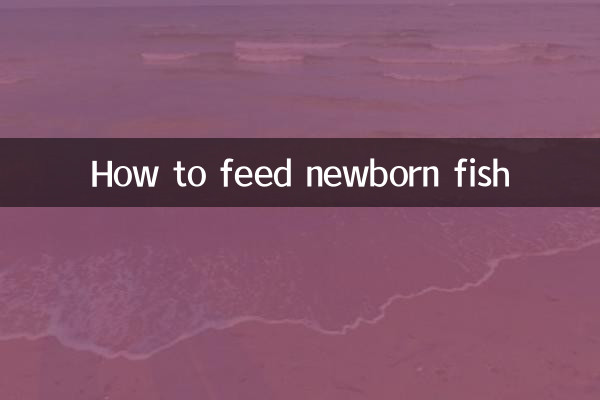How to feed newborn fish
Newly born baby fish (fry) are very fragile and require special care to grow healthily. This article will introduce in detail how to raise newborn fish, including water quality management, feeding methods, common problems and solutions and other structured data to help novice aquarists deal with it easily.
1. Water quality management

Water quality is one of the key factors in supporting small fish. The following are the key points of water quality management:
| Project | Standard value | Things to note |
|---|---|---|
| water temperature | 24-28℃ | Adjust according to fish species and maintain stability |
| pH value | 6.5-7.5 | Avoid wild swings |
| Ammonia nitrogen content | <0.02mg/L | Regular testing to avoid exceeding standards |
| Dissolved oxygen | >5mg/L | Use an air pump to add oxygen |
2. Feeding method
Newborn fish need highly nutritious, easily digestible food. The following are recommended feeding regimens:
| Fish age | Recommended food | Feeding frequency |
|---|---|---|
| 1-3 days | Paramecia (paramecium) | 4-6 times a day |
| 3-7 days | Egg yolk water (diluted) | 3-4 times a day |
| 7-15 days | micro pellet feed | 3 times a day |
| 15 days later | Regular fish feed | 2-3 times a day |
3. Common problems and solutions
In the process of raising small fish, you may encounter the following problems:
| question | Possible reasons | solution |
|---|---|---|
| small fish die | Deterioration of water quality and lack of oxygen | Immediately change 1/3 of the water and strengthen filtration |
| Not eating | food unsuitable | Change to smaller live bait |
| slow growth | Undernutrition | Increase feeding frequency and nutrition |
| white spot disease | parasitic infection | Increase the water temperature to 30°C and add salt for treatment |
4. Breeding environment layout
It is very important to create a suitable living environment for small fish:
| Equipment | function | Things to note |
|---|---|---|
| isolation box | Prevent being eaten by big fish | Choose fine mesh |
| heating rod | maintain constant temperature | Choose an adjustable temperature |
| air pump | Increase dissolved oxygen | Adjust to small bubbles |
| waterweed | provide hiding place | Choose soft varieties |
5. Key points of daily management
1.Be careful when changing water: The amount of water changed should not exceed 1/3 each time, and the water temperature should be consistent to avoid drastic changes.
2.Observe carefully: Check the activity status, appetite and body surface condition of small fish every day.
3.Clean in time: Clean up leftover bait and feces promptly to keep the water clean.
4.Lighting should be moderate: Provide appropriate lighting, but avoid direct sunlight.
5.Density needs to be controlled: Reasonably control the number of fish according to the size of the fish tank to avoid crowding.
6. Special precautions for different fish species
| Fish species | special needs |
|---|---|
| Guppy | Requires higher water temperature (26-28℃) |
| betta fish | Need to be kept alone to avoid fighting |
| goldfish | Requires more space and grows quickly |
| Lampfish | Requires slightly acidic water quality |
Through the above systematic feeding methods, even novices who are new to fish farming can successfully raise newborn fish. Remember, patience and carefulness are the keys to success. As the little fish slowly grows up, you will gain a full sense of accomplishment!

check the details

check the details